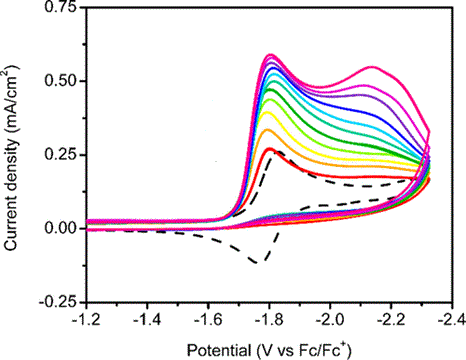THE NICHOLS LAB
RESEARCH AREAS
We are an inorganic research group with interests in the preparation and interrogation of molecular and interfacial electrocatalysts for sustainable energy applications. We draw conceptual inspiration from enzyme active sites to design efficient, selective, and tunable synthetic catalysts. We use cyclic voltammetry, spectroelectrochemistry, time-resolved FT-IR spectroscopy, and SEIRA spectroscopy to gain a deeper understanding of relevant governing parameters and mechanisms.

MOLECULAR SYNTHESIS
We are currently designing and synthesizing molecular catalysts, including metalloporphyrins, bearing various groups at well-defined positions in the second coordination sphere. We aim to alter catalyst function by tuning the type and strength of these peripheral interactions.
Students will gain expertise in the synthesis of ligands and coordination complexes, including air-free Schlenk line and glovebox techniques.

MOLECULARLY-MODIFIED ELECTRODES
The catalytic activity of electrode surfaces can be tuned through variation of molecules adsorbed to the surface. We seek to design electrochemically-stable self-assembled monolayers (SAMs) and examine the ways in which catalysis depends on the molecular nature of the interfacial reaction environment.
Students will synthesize SAM precursors and learn how to prepare and characterize SAMs by various physical and spectroscopic methods.

ELECTROCATALYSIS
We use cyclic voltammetry, chronoamperometry/ chronopotentiometry, pulsed electrochemical techniques, and simulations to evaluate the activity and mechanism of electrocatalysts. These investigations are coupled with various in-situ/operando techniques (see Spectroscopy below) and product quantification by GC and NMR.
Students will gain expertise in theory and practical aspects of electrocatalysis, including electrochemical cell design of electrodes and detection of gaseous and liquid products.

SPECTROSCOPY
Electrochemical studies of soluble and interfacial catalysts can be coupled with spectroscopic techniques to provide a molecular-level view of catalytic processes. Our lab uses primarily FT-IR and UV-Vis spectroscopy and has an interest in spectroelectrochemistry and operando spectroscopy ("under operating conditions").
With our state-of-the-art FT-IR spectrometer and tunable UV-Vis laser system, we can perform time-resolved FT-IR measurements in solution to observe transient species. We also have the capacity to perform Attenuated Total Reflectance Surface-Enhanced IR Absorption Spectroscopy (ATR-SEIRAS), which enables spectroscopic observation of an electrode surface under operation.
